We crossed the border into Armenia from Georgia, met our guide Arthur, and were immediately whisked away through the mountains. 'Did you know', he said, 'that Armenia is 80% mountains and the rest is forest and lowland?'. Well, we certainly came to understand what he meant, for we discovered that Armenia is a land of rugged rocky peaks of immense height, tree-cloaked mountains at a slightly lower altitude, winding roads, jaw-dropping vistas, and often clouds swirling around us as we drove higher and higher. At one stage we were at the highest point in Armenia by road - 2,400 metres (7,200 feet).
Tuesday 17 September
We had a packed itinerary for the day so we were keen to set off. We drove through the clouds. Thickly- treed mountains all around us. What a setting to discover Haghpat Monastery. Built in 895 and completed in 906 (these dates always flummoxed me) it was a collection of buildings that included a church, a bell tower, a refrectory for the monks and tombs. Very impressive.
I loved the carved details that we discovered the more we looked.


The inside of the church was lovely, with frescoes decorating the walls. I admired the metal chandelier which, I soon found, seemed to be a common feature in churches here. Like the churches in Georgia, there's not a lot of glitter, icons and vivid colour.
Cross stones (khachkar) are very much a part of Armenia's cultural heritage, and have been recognised as such, being protected by UNESCO's World Heritage listing. People began carving them as early as the 9th century; the carvings reached their artistic peak around the 12th century. Today the tradition lives on and they are still being carved in Armenia.
The crosses are carved memorial stones made to commemorate a person, an event or as a form of protection. They can be simple or elaborately carved with decorations of grape vines or complicated patterns. They are often found in churches, but generally not on graves. Some are even found on roadsides. The following photo shows three very simple cross stones.
This more fancy one was atop a tomb in the church grounds.
And we spotted another one further along on the roadside.
Over another mountain range and we came upon Sanahin Monastery - very similar to Haghpat, though perhaps even darker and more sombre.
Another glorious metal chandelier.
Outside the monastery complex were the usual souvenir sellers. I spied a bag (I'm such a sucker for bags) and was told it was definitely an Armenian design. The seller loved our struggles with the money, and with our guide helping, we were eventually both happy with the purchase - as was her dog.

Fresh air and nature were provided at our next stop - a welcome break from the austerity of the churches (although I must say I felt remarkably calm and at peace when I was inside them). We visited an arboretum of native and exotic trees grandly called Stepanavan Dendropark, established in 1931 and often referred to as Armenia's first botanical garden. Surprisingly, it was a Polish engineer and forester who decided to utilise the natural forest and add exotic trees from around the world to form a huge park. It's used a lot by scientists who study the flora of the region and see how other plants are adapting to a new environment. We would have needed a whole day (or more) to explore all 35 hectares so we settled for a stroll in the native section - deciduous beeches, oaks, pines, elms, alders, limes and pears, all soft and green, some with a touch of autumn colour. A dog followed us everywhere, enjoying running and jumping in our footsteps.

Our stop for the night was at a delightful B&B in the mountains just out of the town of Dilijan - Echo Gardens. A restful break. There was a lovely garden and the owner cooked a scrumptious meal for us of roast chicken and potatoes.
In the morning we explored our surroundings.

 Wednesday 18 September
Wednesday 18 SeptemberDilijan is an arts and crafts town and artisans demonstrate a range of crafts in their workshops and galleries. We were there at the end of the season so thankfully no bustling summer tourists crowding the place. However, the town seemed eerily deserted.

Admittedly we were there early in the morning, but luckily for us, fellow early birds were a woodcarver and a ceramicist.
Stimulating the economy with the purchase of a fish magnet.
As we were driving away from Dilijan a roundabout caught my eye - sculptures of deer, bears, wolves and other animals were dotted about on the large grassed area. I only got the bears as we sped along! A wonderful addition to a roundabout.

18 September
Today I discovered that the Armenia language has 39 letters. No wonder the language is difficult to pronounce. I bought a bookmark for a friend that shows the alphabet, with the letter T at the top.
We had a very long drive to the highest lake in Armenia. The winding road was shrouded in fog for many kilometres. An old joke which I'm reluctant to pass on, but which I say to myself every time we're in fog, is one a coach driver said to us once on a tour many, many years ago: We've missed the view, so we'll have to view the mist. Perhaps it will stick in your head as it has in mine!
We eventually emerged at Lake Sevan. At one spot (when I was far too late with the camera) the clouds came right down the mountains to fall into the lake - a sight I will never forget.
Perched on a hill overlooking the lake was St Stepanos Church, built in the 9th century with 10th and 12th century additions. I recognised the cross stones at once.
I loved the simple style of the altar.
The back of the church, showing later additions.
On we went (this is when we reached the highest point in Armenia by road - see following photo). We were now on part of one of the ancient silk roads that wound their way through the mountains here.

This turned out, for me, to be one of the most memorable stops on our tour. We visited a caravanserai, built in 1332 to accommodate travellers, traders and animals as they journeyed through the mountains onwards to the west or the east to Persia - the equivalent of a 21st century motel! This isolated spot would have once been a bustling environment with sheep, cattle, dogs, camels and horses vying for space, men shouting orders and filling the interior with their belongings and goods, arranging hay and water for their animals, settling in for the night. Imagine the aromas! Imagine arriving here in heavy snow and strong winds. And now imagine this isolated scene without the tour bus and cars.

The caravanserai was built of basalt. It has an entrance space, a large cavernous hall with pillars and to each side were aisles and troughs for the animals; in addition were two rooms at the end of the hall to accommodate the people. Down the centre of the hall was a long trough to capture rainwater. Skylights in the roof (known as oculus) let in sunlight, air, rain and snow and let out smoke. The rain and melting snow were collected in a depression that ran the length of the building.
It was rather dark and very atmospheric. You can see the water trough running through the centre of the aisle.
In the foreground is the trough for the animals; they slept in the space behind.
The skylight and the rooms for the men at the far end.
Can you see how happy I was?
Driving on, Steve managed to capture the beginnings of some autumn colour.


While I got trucks. But I include this photo because it was such a regular sight - every day truck after truck speeding onwards.
Later in the afternoon we arrived at the Arpa River canyon. We walked along a path adjacent to the canyon walls and river ...

... and came upon the Jermuk waterfall, a cascading rush of water flowing, as our guide said, like a mermaid's hair. Not bad for a waterfall at the end of summer.
Onward to our accommodation for the night (seen in the background) in the mountain spa town of Jermuk. Its mineral waters are bottled and marketed to many countries in the world.
We walked around the picturesque lake towards the mineral waters gallery to do a bit of tasting, feeling very like 'Jane Austen-in-Bath'.
The waters spouted from the wall into lovely urns, going from very hot at one end of the gallery to mild at the end. People were filling cups and tasting.
And here I am. We didn't think to bring a mug.
Cool and overcast. We chanced upon this shepherd out herding his sheep. He stopped and smiled at us. I think he liked being the subject of a photograph.
A little further on we stopped for petrol. We jumped out of the car to inspect the very rural surroundings. Across the road was a farm. At their roadside stall they were selling dried sorrel, small pomegranates and packaged herbs. The wild sorrel from the mountains of Armenia is bitter so it is dried, the fermentation process making it less so. Woman coil it into a manageable dinner-plate size and it used year-round.
An enormous hay rick was being added to.
A rather dilapidated collection of farm trucks and a trailer. We didn't see a soul around.
And now the day became very interesting. We were near our first destination -
Karahunj - a place I had never heard of before. It is a 4.5 hectare site set on a high rocky plateau consisting of large lichen-covered basalt stones set in a kind-of pattern: a north and south arm of stones, a circle surrounding a burial mound and other stones going off in other directions. Some stones have small round holes set in them. The place is intriguing because no-one really knows why it was built and what it was used for. Some people think that the holes were telescopes to view the stars, or that the sun shone through them at solstices, others that they were positioned so the wind whistled through the holes to make a particular sound at certain times. Serious archaeology has only recently taken place and this has resulted in the 'ancient observatory' theory, likening the site to England's Stonehenge, being disparaged. These scientists contend the site is a necropolis dating back to the Bronze Age, and indeed at least 30 graves have been identified here. Some of the stones have also been identified as part of a city wall. I also found out that the site had been the epicentre of an earthquake in 1407 so many of the stones would undoubtedly have been knocked over or moved. However, tourism has latched onto the 'Stonehenge theory' and this seems to be why the site is so heavily visited today. I have to say even our tour company used this label in our itinerary. Whatever, the mystery of the site enthralled me. It's definitely something.
A rather lumpy burial site from which the stones radiate.
The stones with the holes in them do make a moaning sound when the wind blows through them but researchers have yet to reach a definitive conclusion about their significance.
But they make for a clever photograph.
Departing the site, I was full of thoughts of the ancient peoples who had walked over these very paths and used these stones for whatever purpose.
On we drove. We were very near the border of the Azerbaijan-occupied land of Nagorno (seized in 2022). The Iran border was 10 kms away. The Turkish border, closed to Armenia, was nearer.
Our next destination was a wonderful adventure. We were to visit a monastery by cable car, the quickest way across the deep gorge. What fun. I've covered this trip in full because I loved every minute of it - not your usual cable car ride. First we gracefully skirted a settlement, then crossed a hill cloaked in autumn colours, then plummeted across the deepest of gorges then across another grassy hill. In this first photo you can see a cable car in the centre.
Across a thickly treed hill. You can see the cable lines at the top right of the photo.
Then a cleared area as we headed for the gorge.
Can you see a square-shaped ruin in the centre of the following photo?
This is a deserted monastery although one monk still lives there (so not entirely deserted). But certainly isolated.
You can see I was having the time of my life. And finally, we arrived at the
Tatev Monastery.
The monastery was built in the 9th century, with a rebuild in the 12th century after a severe earthquake destroyed some of the buildings.
We explored the three churches, the library that was part of the Tatev University in the middle ages, the refrectory, and the oil press.

There were still some intriguing ruins in the grounds.
I'd left my ball cap in the car so had to don a scarf in the church!

Our guide showed me a narrow hole that led from the church. He said that people would crawl through it and make a wish when they successfully navigated the space. Was he having me on??? Ha - I made it.


But what fascinated me the most was the pendulum. This was a tall column that predicted earthquakes. Being in an earthquake zone the pendulum was a tremendous invention that still has scholars and scientists amazed. In a pit in the ground below the column they inserted a heavy weight that dangled freely but was also connected to a device at the top of the column; when there was a minor trembling of the earth the heavy weight swayed and the movement fed into the device at the top of the column which would subsequently move, alerting the monks and giving them time to evacuate.
We rarely have photos taken together so it was lovely to record our visit here.
On the trip back on the cable car I managed to take a final photo of the area.
After such a long and adventurous day it was relaxing to explore the delightful garden at our hotel.

Two monasteries and a winery were on today's list.
First up, we drove through a gorge to the 13th century
Norovank Monastery, surrounded by towering red rocks. You can see in the photo that it has started to rain.
The rain didn't dampen our enthusiasm for the visit. Here is our first sight of the buildings - framed by a persimmon tree.
The red rocks made for a dramatic setting.
We walked around trying to capture the feel of this isolated site.
The gloomy weather made for some moody photos.

We popped into the church. It was austere and rather grim.

However, the altar was much more elaborate than in previous sites we had visited.
The rain had now stopped so it was off with the raincoat and off to a winery. I was expecting fields of vines stretching to infinity, but no. Evidently the vines are further inland and not on a major road. The winemaker was a friend of our guide and I'm afraid I didn't write down the name of the winery. Let the tasting begin!
While the white and reds were ok we settled instead for cherry wine and bought a bottle. Sweet yet so tasty and more-ish. Followed by a lovely lunch of beef kebabs and an omelette.
One more monastery to go. The Khor Virap Monastery is featured on postcards because of its setting - perched on a hilltop with Mt Ararat in all its snow-topped glory in the distance. The monastery is famous as a Christian pilgrimage destination because the man who introduced Christianity to the Armenians - St Gregory the Illuminator - was imprisoned there for 14 years for defying the pagan king. However, while the cellar he was in was built in the 7th century, it had fallen into ruin and been rebuilt a number of times, making it difficult to really see it as a 7th century building; the huge church and other buildings around it are all from the 18th century, making it, in our guide's words, a 'very modern building'.
So three disappointments: Mt Ararat was completed hidden by thick clouds; the cellar was down a steep ladder and I was not sufficiently motivated to tackle it; despite St Gregory's internment the site lacked the atmosphere that other monasteries we'd visited had.
 |
| This is what we saw from the hill top church. Apparently Mt Ararat is behind these clouds. |
Very few people about.
The interior decoration was suitably subdued.
Although (thinking irreverently here) this chandelier looked more like a disco ball to me.

But we definitely were not disappointed in our dinner this evening. The receptionist at our hotel had suggested a place that served Armenian food and had an Armenian folk band playing there on some nights. She booked for us and informed us that the band were playing this very night. It was fabulous. We had front row seats.

Most of the instruments were traditional Armenian - an oud, a very old version of a flute, a gourd with strings, and a kardo which the girl is playing - like a zither.
There was also a drum and a clarinet. A fascinating evening.
Saturday 21 September
Today we were in the capital city of Armenia,Yerevan. The sun was shining and we were keen to explore. But... we were unaware that it was Independence Day and a holiday. Our research had not told us this! 'Not to worry' says Arthur and we proceed to our first stop: the Matanadaran Institute Museum, a depository of ancient Armenia manuscripts. However, it's closed and only one pre-arranged tour group is allowed to enter. After much pleading and with Arthur showing the guide that we did indeed have tickets, we were allowed to pop in for 20 minutes, as long as we kept well away from the tour group. I did enjoy it, waltzing around the exhibits in such a lovely environment with no-one in sight. The vast collection was beautifully presented in glass cases with detailed explanations written in Armenia, Russian and English. I especially liked a book showing 19th century students how to weave a particular pattern. Another caught my eye - gorgeous painted pictures and text for a theatre company performance. Many of the manuscripts we saw were from the 14th century with some more recent ones from the 18th century. My camera was playing up so these are Steve's photos.




We drove through the city with Arthur pointing our sites. We stopped at a memorial with views of the city below. The statue of Mother Armenia seen holding a sword lengthwise was most imposing.

The view of Yerevan from here.
Arthur then took us on a walking tour of the city. First stop was the Museum of Armenia History.
Oh no! Closed for the day. Arthur was suitably annoyed as they are very proud of their latest exhibition that he wanted to show us: the bronze head of the goddess Anahit, discovered in what was then Armenia (but now Turkey) in 1872 but since residing in the British Museum! I thought he meant the Armenians had got it back, but no, its here only on a 6-month loan. 'Don't give it back' I thought to myself. This is the closest we got to her.
Armenia is a city of fountains, parks and sculptures, restaurants, lovely art and craft markets and shops; it would have taken us days to discover it all. We did the best we could.
I quite enjoyed The Cascade despite the fountain having been turned off. Our luck was certainly running out this day. The fountain is at the bottom of this hill and many, many steps ascend to the top. I think we were told there were 570!
The water comes out of these wonderfully sculptured spouts. Pity we didn't see it in action.
Another view. Check out the glorious leaping deer sculpture.
Public buildings (and a fountain) surround the central Republic Square. This is the post office, in a glorious pink stone.
The museum.
An interesting reflection shot of a modern building.
Let's look at some of the sculptures that caught my eye.







And a more traditional one.
The art and craft market was particularly colourful and enjoyable.
The pomegranate is the national symbol of Armenia. They came in all manner of souvenirs, though not exactly sure what these were apart from being decorative.
We noticed how preoccupied the storeholders were with their phones.
Here I am trying to say 'Thank you' in Armenian.
I had bought a small coin purse. The lady doesn't look impressed - but she was very nice despite 'the look'.
Chess is big in Armenia. We even drove past the Chess Academy in the city. The game is in the school curriculum and children learn it for three years, starting in Grade 3 (eight years old). There were many stalls selling chess boards and pieces.

And finally, we bought a painting - done by the artist herself.
*******************
[The next three photos were taken on our last day in Yerevan, after our tour. We wandered back to the markets so Steve could buy a t-shirt, then through one of the shaded parks where there was a flower stall... and men playing not chess, but backgammon... and a carousel (which I love), though sadly not in motion.]
**********
The next destination on our tour brought us back to earth. We visited the Armenia Genocide Museum, a powerful remembrance of the people who lost their lives in the genocide from 1915 to the 20s when the Turks wilfully executed 1.5 million Armenians. A garden of fir trees has been planted at the entrance; officials from other countries plant a tree when they visit and pay their respects. Their name and country are printed on a plaque next to the tree.
In the distance is the building known as the Temple of Eternity.
Inside there is an eternal flame.
It was a profoundly moving experience. I'm glad we visited and know that this very dark period in Armenia's history has not been forgotten.
*********
And then, perhaps to cheer us up a bit, Arthur gave us a lovely surprise. Because the history museum was closed the tour company had booked us (and paid for) an evening meal at a restaurant right in the heart of the city. We couldn't wait to go.
And it was every bit as we hoped - red wine, dips scattered with pomegranate seeds, soft bread, a beetroot and cheese salad, minced beef and herbs wrapped in a pastry case, a plate of radish, lettuce, and roast potatoes with barbecued pork chops. All absolutely delicious. And to end it all - baklava, thickly honeyed and full of nuts. Witness one very happy diner.
Sunday 22 September
Up early to visit one last monastery. However, on the way, Arthur suddenly became quite excited and stopped the car. What was going on? 'Look', he said.' You can see Mt Ararat'. Catching a sight of this magnificent mountain is indeed a bit like searching for the Holy Grail. But there it was. Grabbing the camera I sprinted up the rise and gazed at the peak arising out of the clouds. How lucky we were.
I loved the accordian player who had set up 'shop' nearby, an open box at his feet, hoping to appeal to the generosity of the people as they walked past to view the mountain top.
And here it is! The snow-covered peak disguising itself very well as a cloud. (It's the 'cloud' to the right.) There is no sense of its immense size. If there were no clouds and haze it would fill the entire frame.
We drove on through the fruit and nut growing region of Armenia - peaches, apples, plums, apricots, almonds and walnuts. This was also an area where landslides were common, the most recent being in 2018; we saw the remains of a house at a 45° angle, the rest stuck in the ground. Huge boulders littered the surrounding fields. Finally, we arrived at the Geghard Cave Monastery, built in 1215 and a World Heritage site. It's built almost entirely into rock. It's Sunday so there's quite a few people about, especially as a service is taking place inside the church.
The interior of the church was, as we've come to expect, austere and solemn.
There were three 'cave-like' spaces, all quite dark. In one of them was a spring and a small stream. In another, the acoustics were so perfect that people come and practise their singing. In the following photo a tour group gets ready to try this out.

In the church itself, a service was taking place. Love the sunlight streaming in!
Outside the complex were the usual stalls selling souvenirs, food and drinks. Dried sorrel, pomegranates and doves here.
Buskers.
And a lady selling sweetbread - a concoction of delicious bread layered with almond paste. I say delicious because she let me sample some. And yes, I bought some. Very moreish indeed.
Tourists can never resist a pat. I thought this made a lovely photo.
Our final stop was the
Garni Temple built in 77AD and another World Heritage site, being 'the best-known structure and symbol of pre-Christian Armenia'. Its history is as complicated as all Armenian history is. Debate still occurs over whether it was a temple or a mausoleum. Was it built by the Romans or by the locals? Was it really built in the third century? The actual building we see today is a reconstruction (though using the original stones found on the site) after a massive earthquake destroyed the entire structure in 1697. Reconstruction only began in 1969-1975, three hundred years after the earthquake. Whatever its origins, this is where everyone was today.

It was so crowded it really did spoil the atmosphere as everyone was climbing up the steps and all over the site. Oh well, I might as well join them!
I think I was exhausted and feeling the heat and the crowds by now. My camera too had had enough, sighed and gave up.
I've popped in this photo as I wish I had seen it like this.
 |
| source: Wikipedia |
Luckily there was one final stop that I thoroughly enjoyed - the Food Market.
While there were cheese, meat and vege sections it was the dried fruits that caught my attention. Not surprisingly because there were so many stalls devoted to dried apricots, figs, peaches, dates.....you name it, it was here. Out with my phone camera now; at least that's reliable.
And some fresh fruit. Ooooooh - figs, my favourite.
And nuts and more dried fruit.
And so ends our whirlwind seven-day journey through Armenia. Memories of winding mountain roads,
spectacular vistas, friendly people, monasteries full of history, forests, the cable car ride, parks and sculptures. I'll end with a few photos that sums this all up for me. Warning - all the photos are of ME.


***********************************************************************************








 Most of the instruments were traditional Armenian - an oud, a very old version of a flute, a gourd with strings, and a kardo which the girl is playing - like a zither.
Most of the instruments were traditional Armenian - an oud, a very old version of a flute, a gourd with strings, and a kardo which the girl is playing - like a zither. 


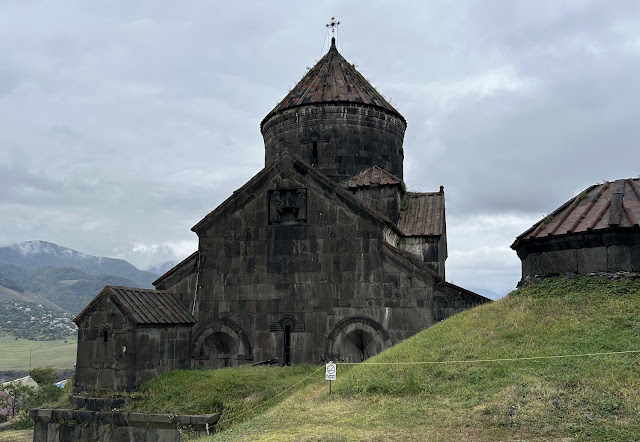


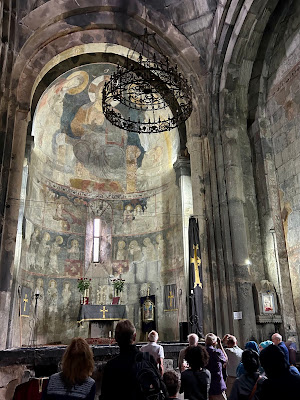





















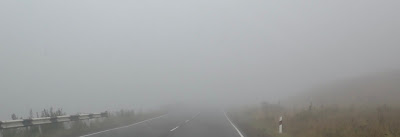
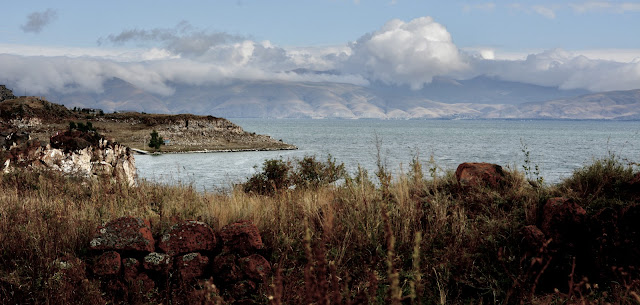














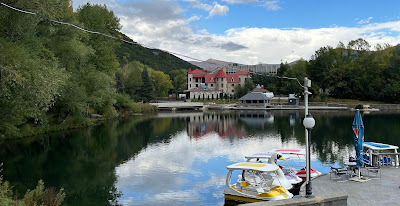









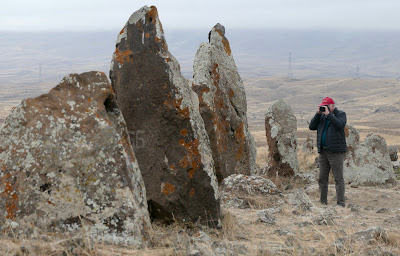


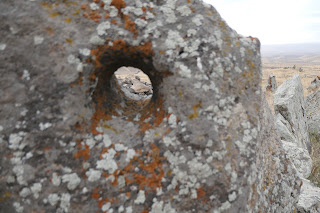







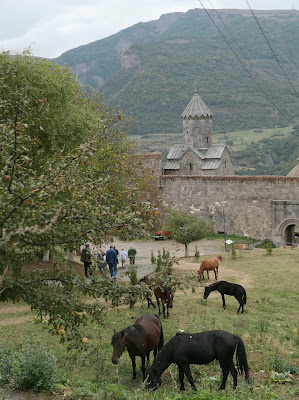
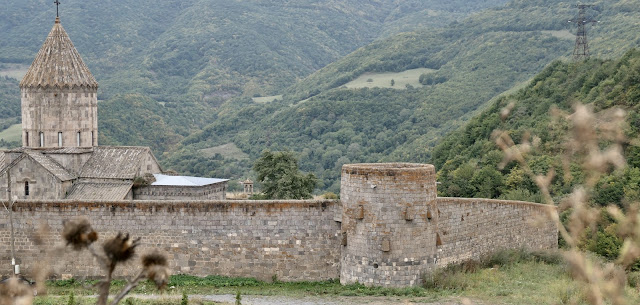

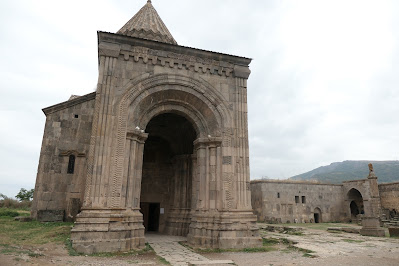






















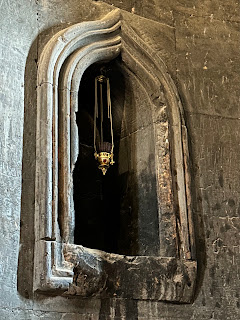


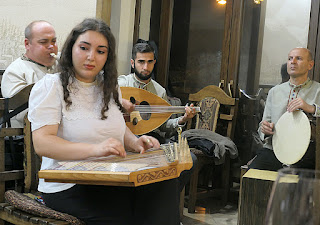









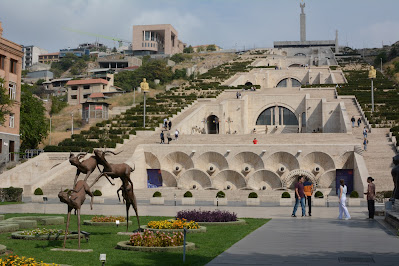


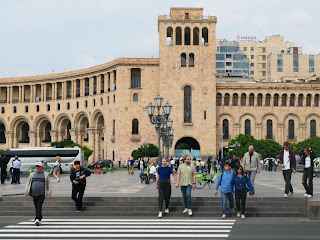












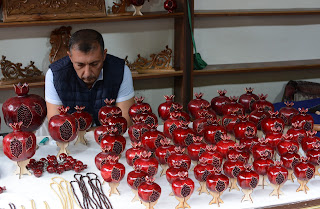










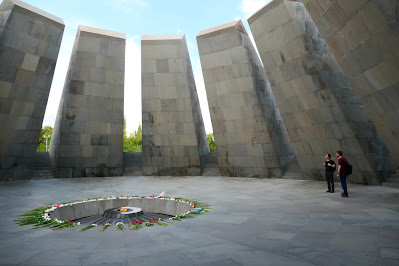













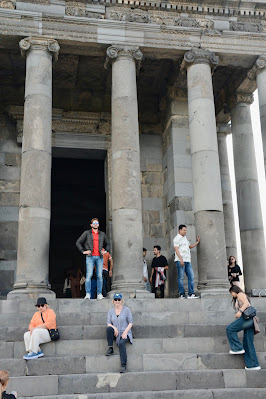







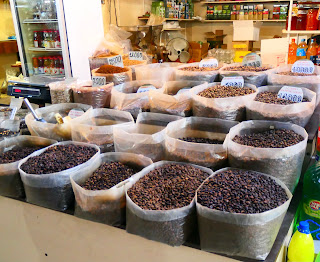



Beautiful! The meal with baklava sounds divine. And I love the bouncy dog. Oh, and the figs and dried fruits. Can't help but think of Ararat between Melbourne and Adelaide... XXXX
ReplyDelete